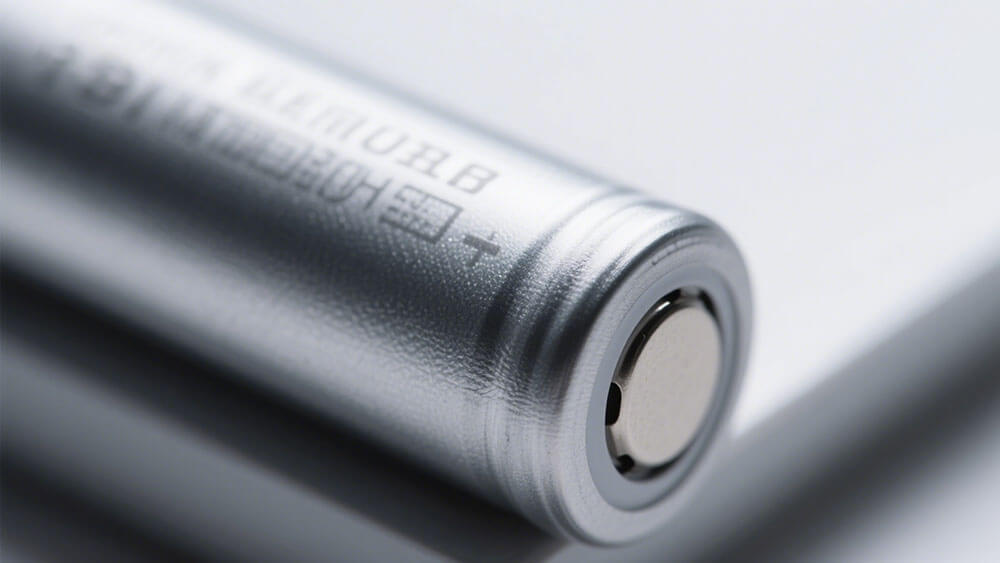
A 9V battery’s current output varies depending on its usage and design. In short-circuit conditions, it can theoretically provide up to 4.5–9 amps momentarily. However, under normal conditions, its continuous output is far lower. For example:
An alkaline 9V battery can sustain over 350mA for one hour until its voltage drops to 4.8V.
A lithium 9V battery delivers over 500mA for 1.2 hours, maintaining a voltage of 6.8V.
A carbon-zinc battery, being less efficient, provides only 150mA for six minutes before its voltage falls to 4.8V.
These differences highlight the importance of understanding amps of 9v battery performance for practical applications.
Key Takeaways
Learn how much current different 9V batteries can give. Alkaline batteries give about 350mA, and lithium ones can give over 500mA for longer times.
Use lithium battery packs for devices needing more power. They last longer and keep voltage steady, great for medical tools or robots.
Never short-circuit 9V batteries. It can cause harm or danger. Always check the battery matches your device’s needs for best results.
Part 1: Understanding Amps of 9V Battery

1.1 Theoretical Maximum Current Output
The theoretical maximum current output of a 9 volt battery depends on its internal design and chemistry. When you examine the short-circuit scenario, the battery can deliver a momentary surge of current ranging from 4.5 to 9 amperes. This peak output occurs because the battery faces minimal resistance during a short circuit. However, this condition is not sustainable and can damage the battery or connected devices.
To better understand the capacity of different 9 volt batteries, consider the following table:
Type of 9V Battery | Capacity (mAh) |
|---|---|
Alkaline | 550 |
Carbon-Zinc | 400 |
Lithium Primary | 1200 |
NiMH | 175-300 |
Lithium batteries stand out due to their higher capacity, making them ideal for applications requiring consistent power output. For instance, lithium-ion batteries are commonly used in medical devices, robotics, and security systems due to their reliability and efficiency.
Tip: If your application demands high current output, transitioning to lithium battery packs can significantly enhance performance and longevity.
1.2 Continuous Current Output in Practical Scenarios
In real-world applications, the continuous current output of 9 volt batteries is much lower than their theoretical maximum. Alkaline batteries typically provide 500–800 milliamps under normal conditions, while lithium batteries can sustain higher outputs due to their advanced chemistry.
For example, an alkaline 9 volt battery might power a consumer electronics device for several hours, but its voltage drops steadily as the battery discharges. Lithium batteries, on the other hand, maintain a more stable voltage throughout their discharge cycle, ensuring consistent performance.
When choosing a battery for industrial or infrastructure applications, you should prioritize lithium-based options. Their higher energy density and longer cycle life make them suitable for demanding environments.
Note: Lithium-ion batteries offer platform voltages of 3.6–3.7V, energy densities of 160–270Wh/kg, and cycle capabilities of up to 2000 cycles.
1.3 Short-Circuit Current and Its Implications
Short-circuit conditions in a 9 volt battery result in a rapid discharge of current, often exceeding 4.5 amperes. While this might seem advantageous for high-drain applications, it poses significant risks. The battery heats up quickly, leading to potential leakage, swelling, or even explosion.
You should avoid short-circuiting batteries in any scenario. Instead, focus on matching the battery’s output to your device’s current requirements. For high-drain applications like robotics or medical equipment, lithium battery packs provide a safer and more efficient solution.
Alert: Always use a battery management system (BMS) to monitor and regulate current flow, especially in critical applications.
Part 2: Factors Influencing the Output of 9 Volt Batteries

2.1 Internal Resistance and Voltage Drop
Internal resistance plays a critical role in determining the power output of a 9 volt battery. When current flows through the battery, internal resistance causes a voltage drop, reducing the energy available to your device. This phenomenon becomes more pronounced under high-drain conditions, where the battery struggles to maintain stable output.
Several experiments and simulations highlight this effect:
SPICE simulations demonstrate how unbalanced circuits amplify voltage drops caused by internal resistance.
Practical tests reveal significant terminal voltage drops when batteries supply high currents.
The Kelvin or 4-wire resistance measurement method precisely quantifies small resistances, offering insights into voltage drop behavior.
For applications requiring consistent power output, lithium-ion batteries outperform alkaline alternatives due to their lower internal resistance. Their advanced chemistry ensures minimal voltage drop, even under demanding conditions.
Tip: To optimize performance, consider lithium battery packs with integrated battery management systems (BMS). Learn more about BMS here.
2.2 Battery Chemistry: Alkaline vs. Lithium
The chemistry of a 9 volt battery significantly impacts its efficiency and reliability. Alkaline batteries exhibit a gradual voltage decline during discharge, limiting their suitability for high-drain applications. Lithium batteries, on the other hand, maintain stable voltage throughout their lifespan, ensuring consistent performance.
Metric | Alkaline Batteries | Lithium Batteries |
|---|---|---|
Voltage Stability | Gradual decline in voltage during discharge | Higher and more stable voltage throughout lifespan |
Watt-Hour Efficiency | Lower watt-hour capacity | Significantly higher watt-hour capacity |
Self-Discharge Rate | Higher self-discharge rate | Much lower self-discharge rate |
Temperature Tolerance | Reduced performance in extreme temperatures | Better performance across a wide temperature range |
Lithium-ion batteries, with their superior energy density and cycle life, are ideal for industries like medical devices, robotics, and security systems. Their ability to deliver consistent power output makes them indispensable for infrastructure and industrial applications.
Note: Lithium-ion batteries offer platform voltages of 3.6–3.7V, energy densities of 160–270Wh/kg, and cycle capabilities of up to 2000 cycles. Learn more about lithium-ion batteries here.
2.3 Discharge Rates and Load Characteristics
Discharge rates and load characteristics determine how efficiently a 9 volt battery performs under varying conditions. High-drain applications demand batteries with robust discharge capabilities, while low-drain scenarios prioritize longevity.
The table below compares discharge rates across popular 9 volt battery brands:
Size | Brand | 9V battery Amp-Hours at 100 mA Discharge rate | 9V battery mAHs at 500 mA Discharge Rate | 9V battery Amp-Hours at 1000 mA Discharge Rate |
|---|---|---|---|---|
9 Volt Alkaline | Duracell Coppertop | 310 mAH | 170 mAH | 90 mAH |
9 Volt Alkaline | Duracell Procell | 310 mAH | 170 mAH | 90 mAH |
9 Volt Alkaline | Energizer Industrial | 450 mAH | 330 mAH | 230 mAH |
9 Volt Alkaline | Nuon | 490 mAH | 280 mAH | 300 mAH |
9 Volt Alkaline | Rayovac Industrial Plus | 440 mAH | 290 mAH | 140 mAH |
9 Volt Carbon Zinc | Panasonic Super Heavy Duty | 52 mAH | N/A | N/A |
Lithium battery packs excel in high-drain applications due to their superior discharge rates and load-handling capabilities. For businesses requiring reliable power output, transitioning to lithium-based solutions ensures optimal performance.
Alert: Custom lithium battery solutions can address unique discharge requirements. Explore options here.
Part 3: Practical Applications of 9 Volt Batteries

3.1 Current Requirements of Common Devices
Devices powered by 9 volt batteries have varying current requirements based on their functionality and design. Low-drain devices, such as smoke detectors and carbon monoxide detectors, demand a steady current over extended periods. High-drain devices, like electronic door locks and security cameras, require bursts of higher current to operate efficiently.
Device Type | Battery Type | Characteristics | Applications |
|---|---|---|---|
Low-Drain | Procell Alkaline Constant 9V | Ideal for constant current over long periods, longer-lasting power, fewer replacements | Smoke detectors, carbon monoxide detectors |
High-Drain | Procell Alkaline Intense AA | Designed for high power needs, longer-lasting power, fewer replacements | Electronic door locks, soap dispensers, security cameras |
Switching to Procell Constant for low-drain devices can save businesses up to 20%. Similarly, Procell Intense batteries for high-drain devices offer comparable savings. These options optimize operational efficiency and reduce maintenance costs.
Tip: Evaluate your device’s current requirements carefully. For high-drain applications, lithium battery packs provide superior performance and reliability.
3.2 High-Drain Applications and Lithium Battery Packs
High-drain applications demand batteries that can deliver consistent power output without compromising efficiency. Lithium battery packs outperform traditional alkaline batteries in 80% of use cases, offering advantages like a threefold longer lifespan and stable voltage under extreme conditions.
Lithium batteries are preferred for devices such as digital cameras, smartphones, and laptops. Their higher energy density and stable voltage output make them ideal for applications requiring reliable power. Additionally, their lower self-discharge rates ensure longer shelf life, reducing the need for frequent replacements.
Key Features of Lithium Battery Packs:
Flat voltage curve for stable power output.
Low internal resistance for longer runtime under elevated loads.
Better performance in extreme temperatures.
For businesses relying on high-drain devices, transitioning to lithium battery packs ensures optimal performance and cost savings. Custom lithium battery solutions can address unique discharge requirements, enhancing efficiency across various industries.
Alert: Explore custom lithium battery solutions tailored to your needs here.
3.3 When to Transition to Lithium Battery Packs for Better Output
Transitioning to lithium battery packs becomes essential when your application demands higher and more reliable current outputs. Industries like medical, robotics, and infrastructure benefit significantly from lithium-ion batteries due to their advanced chemistry and superior energy density.
Lithium-ion batteries (LiBs) are indispensable for grid-scale energy storage systems, which require substantial power and energy for stable operation. Their ability to deliver consistent power output makes them ideal for critical applications. Effective power management systems further enhance their reliability, ensuring balanced performance and preventing overcharging.
Advantages of Lithium Battery Packs:
Higher energy density compared to alkaline batteries.
Stable voltage output until depletion.
Longer cycle life, reducing replacement frequency.
If your business relies on high-drain devices or operates in demanding environments, lithium battery packs offer unmatched efficiency and reliability. Their performance advantages make them a worthwhile investment for applications requiring consistent power output.
Note: Learn more about lithium-ion batteries here.
You should evaluate the current requirements of your devices before selecting a battery. Alkaline 9 volt batteries struggle in high-drain scenarios due to voltage drops and limited discharge rates. Lithium battery packs offer stable output, longer lifespan, and better efficiency. To maximize battery performance, measure capacity, internal resistance, and depth of discharge.
FAQ
1. How can you power your arduino with a 9V battery?
You can connect a 9V battery to your arduino using a barrel jack or VIN pin. Ensure the battery meets your arduino’s voltage requirements.
2. Is powering your arduino with a 9V battery safe?
Yes, it is safe if the battery voltage matches your arduino’s input range. Use a voltage regulator for added protection.
3. What are the limitations of using a 9V battery for powering your arduino?
A 9V battery may drain quickly in high-drain applications. Lithium batteries provide better efficiency and longer runtime.






